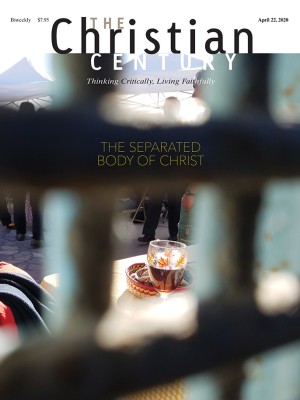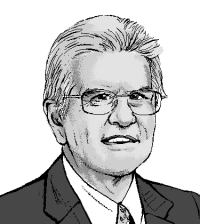The misión integral of Protestant liberation theologians
Samuel Escobar, René Padilla, and other Latin American evangelicals—and how their activism was overshadowed
Two religious trends have been critical in recent Latin American history: the Marxist-leaning liberation theology that peaked between the 1960s and the 1980s and the dramatic rise of evangelical Protestantism (and especially Pentecostalism) in subsequent years. Although many books are available on both topics, much of the religious story remains to be told—especially about political currents that don’t fit well into either of those grand narratives. David Kirkpatrick does a fine job of muddying those simplistic categories as he tells a story of global significance.
Liberation theology emerged powerfully in several countries, generally in a Catholic context. The movement owed much to the high hopes raised by the Cuban Revolution, and it found a wider audience as more of the population began to experience higher education. Its key turning point came in 1968, when bishops at the Second Episcopal Conference of Latin America in Medellín, Colombia, proclaimed a “preferential option for the poor,” sparking an outpouring of activism and publication.
Read our latest issue or browse back issues.
Some enthusiasts espoused overt armed revolution, advocating an alliance between Marxist guerrilla groups and militant expressions of the church. The movement reached its height during the 1970s, and it found an exhilarating focus in the revolutionary upsurge that swept Central America after the revolution in Nicaragua.
Liberation theology lost influence, however, with the defeat of the Far Left across the continent and the discrediting of socialism. It was further weakened by Pope John Paul II’s conservative politics.
Latin American Protestants involved in liberation theology during the 1970s garnered little international coverage because Protestants were at that point believed to be such a tiny presence on that continent. When the Central American struggles of the 1980s devolved into mass carnage—as in El Salvador and Guatemala—left-wing narratives commonly depicted Protestants as allies or tools of US imperialism, or at best as advocates of conservative and counterrevolutionary causes. The “evangelical left” sounded like an oxymoron.
Yet such a hybrid beast did exist, as Kirkpatrick demonstrates. It was led by evangelicals such as Samuel Escobar of Peru, C. René Padilla of Ecuador, and Orlando E. Costas of Puerto Rico. Their activities were overshadowed by the Catholic liberation movement, but their ideas were novel—and distinctively evangelical.
These thinkers’ commitment to activism was rooted in assumptions about the power of sin and the necessity for personal conversion and transformation. They emphasized that any reform efforts must have a comprehensive social dimension. In impoverished Latin America, with its wild inequalities, this kind of faith could not fail to have political implications. Thus, their preaching was centered on integral mission, misión integral.
Kirkpatrick places these new theories firmly within their political context. Universities and student movements were hothouses for debate and innovation. Leftist rhetoric and iconography were so pervasive in the 1970s that any movement hoping to speak broadly to young and educated people had to engage with that world of Marxist-derived language and thought. At the same time, regimes in much of Latin America were so intransigently right-wing that anyone participating in any reform endeavor was classified as leftist—and risked lethal consequences during outbreaks of official repression.
Escobar, Padilla, and the rest couldn’t simply accept the “racial and class segregation” presented by “American culture Christianity.” They knew that race and class matter, and that privilege needs to be rejected. But they were emphatically different from the truly revolutionary liberationists, whose uncritical absorption of Marxist ideology was near total.
These Protestant progressives were well aware of the universal nature of sin and appropriately cautious about human-based political solutions to problems. As they noted, you could look long and hard in the Bible—and especially in texts like Paul’s letters—without finding any warrant for the idea of the church molding social structures. They also knew the danger of trying to build a new social order on the basis of violence, conspiracy, and appeals to party discipline. Their theories of misión integral thus stood as a third way between revolutionary liberation theology and the Cold War right.
One of the book’s surprising points is the strong and strikingly early influence these activists had on global Christian agendas—which is especially remarkable given the woefully low number of Protestants in Latin America at this time. Kirkpatrick details the impact of Padilla and others on the Lausanne Congress, a worldwide meeting of evangelical leaders in 1974. Their ideas strongly influenced the section on Christian social responsibility in the covenant that emerged from that gathering. These early contributions laid a valuable foundation for the wider evangelical world’s acknowledgment of Latin American concerns in the following decades.
These theologians had to walk a delicate path as they tried to follow an evangelical tradition rooted in the Global North without too visibly importing the north’s deep investment in Cold War ideologies. Just how do you preach a gospel that seems to come imprinted with a Made in America stamp when you’re trying to reach a mass audience repelled by any such associations?
Several left-liberal Americans stand out as intermediaries in this process, including John Howard Yoder, Ron Sider, and Jim Wallis. Kirkpatrick also emphasizes the key role of Britain’s John Stott in accepting the social gospel idea and projecting it onto a worldwide canvas.
These intermediaries became particularly important when some particularly conservative American evangelicals, convinced that Padilla and his colleagues had succumbed to a Bolshevism-plus-Bible-verses approach, prepared to eject them from the evangelical movement. Fortunately, as Kirkpatrick notes, the social gospel groundwork allowed even some politically conservative US evangelicals to welcome the Latin American progressives as family rather than foe.
A Gospel for the Poor is exceedingly well researched. Inevitably, given the scope of the project, Kirkpatrick focuses strongly on leaders—clergy and intellectuals—rather than on ordinary believers, and he gives no sense of the factors driving the explosive growth of the late 20th century. One unfortunate result is that he has little to say about women in these grassroots movements. Kirkpatrick is aware of this gap, and he makes an admirable attempt to remedy it by thoughtfully describing the enormous contributions of Padilla’s wife, Catharine Feser Padilla.
In addition to telling us a great deal about the development of modern evangelicalism, especially in its global and transnational dimensions, Kirkpatrick broadens our understanding of Latin American history. Never again should we tell the story of Christian activism in the Latin America of this era exclusively in terms of Catholic liberation theology.
A version of this article appears in the print edition under the title “Protestant liberation theology.”








